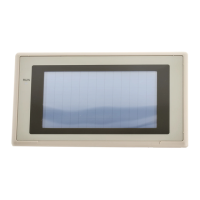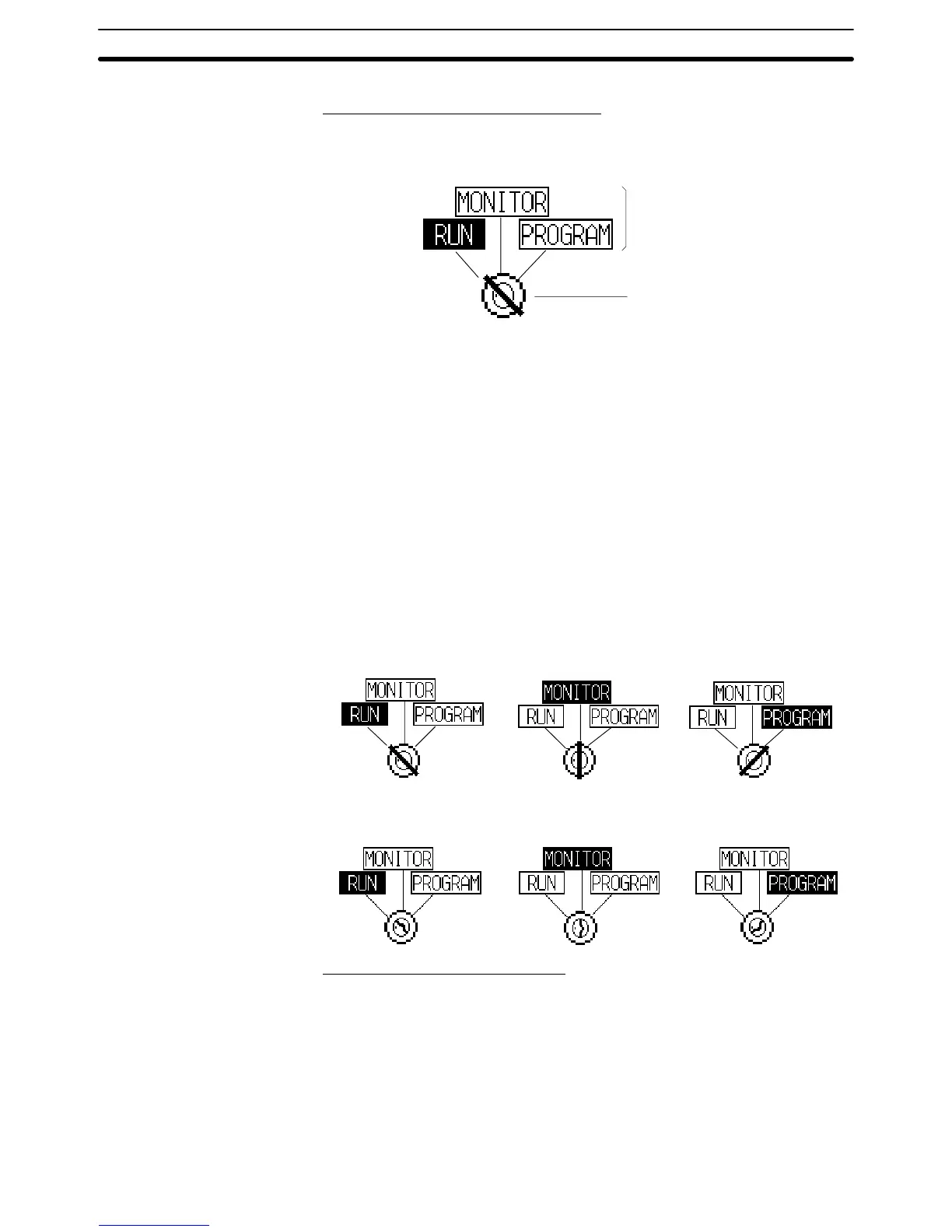6-12SectionProgramming Console Function
170
Key Operations
Mode Selection Keys, Mode Lock Key
The display element on the Programming Console screen shown below com-
prises the mode selection keys, which change the operation mode of the PC,
and the mode lock key, which prevents unintended mode changes.
Mode selection keys
Mode lock key
The
RUN, MONIT
OR, and PROGRAM mode selection key elements are touch
switches
and pressing them causes the PC operation mode to
change (unlike an
actual
Programming Console, it is possible to switch directly between the RUN
mode and the PROGRAM mode.)
When
the Programming Console function is started, the PC operation status is
read and reflected at the PC.
The
mode lock key element is also a touch switch, and it alternates between the
lock
ON (with
no key displayed) and lock OFF (with key displayed) states when
pressed.
During the lock ON state, mode
selection key operations are inef
fec-
tive.
The mode displays change as indicated in the figures below during the lock
ON status and during the lock OFF status.
When the Programming Console function starts, the lock ON status is estab-
lished.
If
the RUN, MONIT
OR, or PROGRAM mode selection key is pressed in the lock
OFF status, the mode changes and the lock ON status is established.
During Lock OFF
RUN
mode
MONIT
OR mode
PROGRAM mode
During Lock ON
RUN
mode
MONIT
OR mode
PROGRAM mode
Programming Console Keyboard
The Programming Console keyboard used on the screen when the Program-
ming
Console function is
used is comprised entirely of touch switches (shown by
the
dashed line frames in the figure below). On pressing
a touch switch, a key
operation
is executed. However
, since there is a discrepancy between the size
of
the displayed keys and
the size of the touch switches, take care to press as
close to the center of the key as possible by referring to the figure below.
In
addition, if the connected host is
a CS1G/CS1H, CS1G-H/CS1H-H, or CJ1G
PC,
the Programming Console key sheet for the CS/CJ series is
automatically
displayed.

